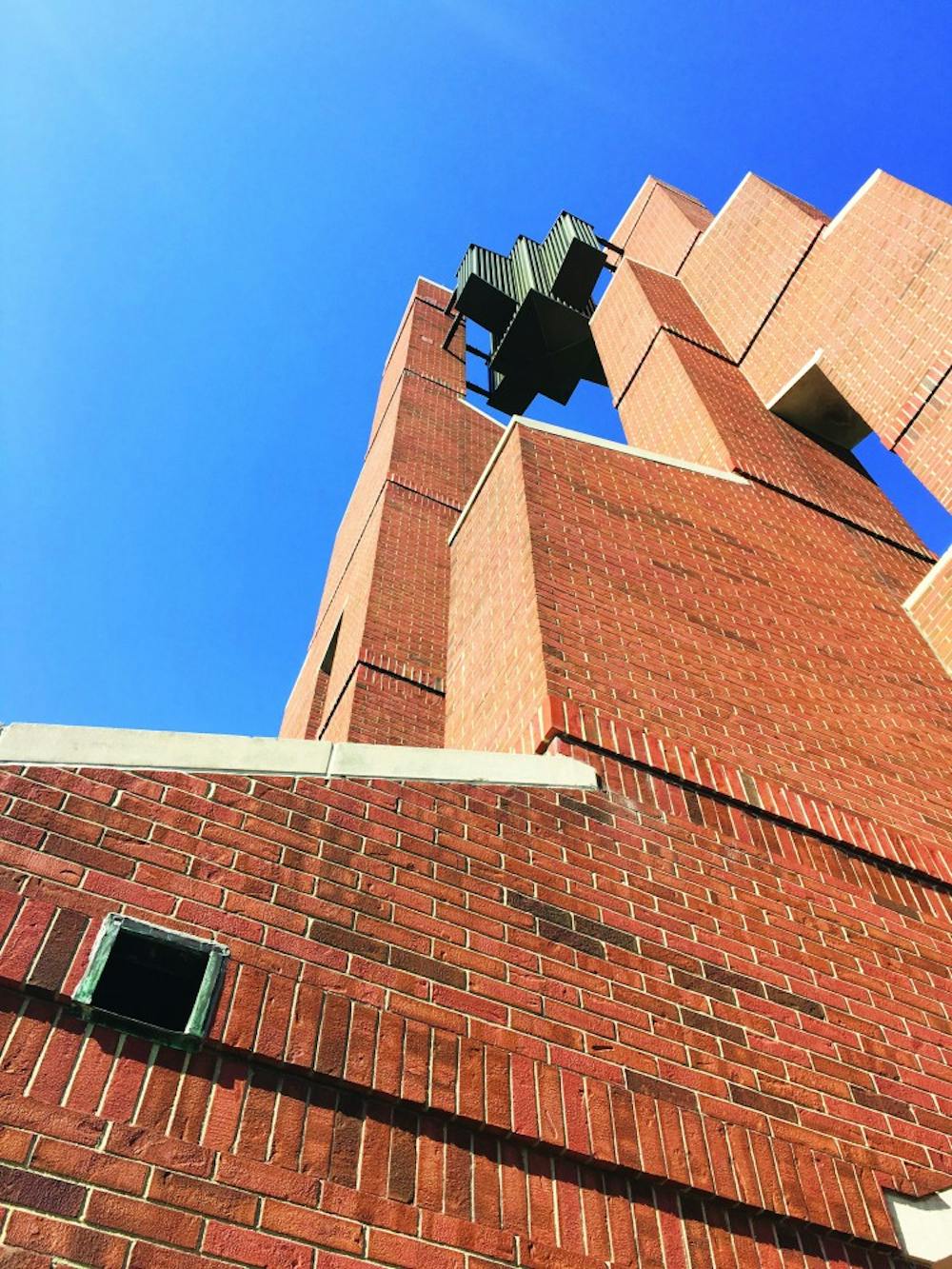By Donna Downs | Faculty Contributor
Up beyond the village border,
Pointing in the air,
Stands her tower seen far distant
When the day is fair.
(Taylor School Song)
Perhaps the only phrase heard more at Taylor University than "intentional community" is "integration of faith and learning."
In the late '80s when I began my career at Taylor University, I researched symbols and artifacts that signified culture here. The one key artifact that illustrated this intersection of faith and learning was the twin spires of the Rice Bell Tower and its configuration of lights.
A single bright beam from each tower shone at an angle that forced the two together high in the sky, where they continued in solidarity as a radiant splendor that could be seen for miles.
This coming together connoted Taylor's sole purpose: assimilating faith and learning to "develop servant leaders marked with a passion to minister Christ's redemptive love and truth to a world in need."
"The Rice Bell Tower is located at the center of campus and is double or twin in structure," stated professor of history William Ringenberg in his book, "Taylor University, The First 150 years." "Thus, its location and architectural pattern are meant to communicate to all who see its form by day and its light by night the central institutional conviction that the search for knowledge and truth in the universe is essentially a search for God and is dual in nature."
"The symbolism is really profound," Ringenberg said in a recent interview. "I would say that the towers are the single best source of visible, physical symbolism on campus. Nothing compares to it."
But the lights have long since gone out.
This leaves us to wonder why. One story is that to get the lights to shine so high, the original builders had to use ship bulbs, which got so hot that they often burned out and melted the plastic coverings. They were also expensive to replace.
Ron Sutherland, special assistant to the president, remembers being told the original lights were so bright that they caused issues with low flying aircraft.
Facility Services Director Greg Ely says the Bell Tower lights were replaced in 2007-8 because "the existing fixtures were past the end of their life and grossly energy inefficient." He believes the current lights illuminate the tower more than the ones replaced.
They don't, however, emanate from the spires as the original lights did and join together symbolically.
"I love the symbolism that the Bell Tower provides," said Sutherland, "and the fact that the lights used to accentuate that symbolism."
He believes the challenge we face with any symbol is the cost to maintain it.
"If we can find a cost-effective way to return the symbolic 'beam' . . . without bothering air traffic and if we can find a way to light the area well, and if this symbol is deemed to be worth the investment, I would support that," Sutherland said.
The artifact that so beautifully represented faith and learning coming together has long been subdued. A piece of culture has been extricated. Who among us will champion its return?





